How to Get Started with Poultry Rearing – Key Strategies to Grow Your Farm
How to Get Started with Poultry Rearing
How to Get Started with Poultry Rearing – Key Strategies to Grow Your Farm!
Are you interested in starting your own poultry farm? Reaping the benefits of poultry rearing has never been easier. Today, with the right strategies, you can create a profitable poultry farm that fits your lifestyle and budget. In this blog post, we will be discussing some key strategies to help you get started with poultry rearing and grow your farm. We’ll go over topics like the costs associated with the operation and how to choose the right poultry breed for your farm.
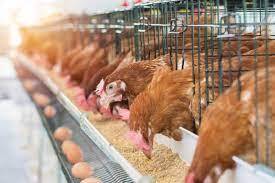
The Benefits of Poultry farming in Nigeria
Poultry rearing has been an important and varied industry for centuries and continues to be so even in these modern times With the various benefits of poultry rearing, it is no surprise that it remains a popular activity today In this comprehensive guide, we will be discussing some of the main aspects of animal husbandry, including livestock breeding, cattle farming, poultry rearing, swine production, and dairy farming, as well as sheep management and equine husbandry We will also cover goat herding and animal feeding in relation to poultry production systems. Animal Husbandry is defined as “the care or management of farm animals” by the Merriam-Webster Dictionary The term encompasses many types of practices related to caring for animals, such as livestock breeding (including chickens), reproduction planning & herd health maintenance activities associated with managing a flock or herd on an ongoing basis Furthermore, specific animal husbandry tasks may include providing feed and water rations; vaccinations against disease; basic medical care, etc, all aimed at keeping managed animals healthy during their lifetime, both young stock and mature adults within flocks or herds Poultry production setup generally consist of housing structures typically known as coops or sheds with adequate food and water storage spaces and areas which are suitable to cleanse birds from parasites or other ailments, etc. appropriately sheltered outdoor areas where they can exercise move freely & socialize—see often referred to “runs” ; foraging plots around grasslands whereby they benefit from nutrient-rich grazing material; nests where they lay eggs ; feeders designed primarily for ease accessability when being fed with commercial mixtures; drinkers either set up artificially through man-made systems like cup fountains hooked onto central reservoirs helping sustain ample quantities & regular supply patterns–or troughs filled with natural sources such fresh water streams whenever feasible nearby. Livestock Breeding mainly refers to raising select breed lines either commercially ie aiming towards marketable products like meats& analogous foodstuff items –but might also involve experimenting with new genetic traits either due to recreational purposes (like nature watching or raw scientific investigation pointing out unknown potentialities regarding explorative genetics research studies, et cetera…Cattle Farming implies taking specific actions directed toward improving productivity efficiency on milk cows mostly—attending conditioning issues thus increasing butterfat content yields associated amongst certain producer herds dealing into short paths supplying regional creameries depending upon local markets demands —There are several peculiar assessment procedures applied commonly conducted via closely monitoring selective microorganisms contained inside sample specimens taken directly from milking machines apparatus setups straight off attending parlors floor shelves prior concluding definitive results accordingly sorted out taking variant external factors thru proper consideration throughout process endurance periodicity estimative phases—which wind up yielding scores leading validations over inspection panels final findings advisedly determined right after rejection.
The Costs Associated with Operation and Poultry farming equipment
Animal husbandry is the practice of caring for and managing animals, such as cattle, sheep, poultry livestock, or horses It involves a variety of activities related to animal health, nutrition, and breeding that are necessary for proper care and production Animal husbandry has traditionally been practiced in many societies since ancient times As it progressed over the centuries, it began to involve aspects of science and technology which enabled farmers to produce greater yields with improved quality products. The costs associated with operation can be daunting when you compare raising animals in your own backyard versus buying from a farm or purchasing frozen meat from the store The startup cost alone can range from hundreds to thousands (depending on what type of animal you choose, but consider these common factors related to long-term care shelter, feed & supplements, veterinary services/medication/vaccinations; tools/equipment like fences; labor supply; taxes & regulations pertaining directly or indirectly to animal rearing, etc. When considering overall beef producers may have additional costs related strictly toward herd management such as slaughters house fees if they want their cow’s meat processed professionally rather than butchering them at home (which is illegal in some states Other types of animals used for more diversified purposes like horses typically require larger pasture acreage per horse kept along with specialized feed & hay–not always easily available–thus making this venture even pricier than most other livestock operations depending on where one resides geographically and what type breed was chosen specifically (ie an Arabian purebred vs crossbreed In addition dairy cows need increased attention not only due higher dietary needs but also milking procedures which take time out daily compared against typical grazing requirements simply enjoyed by steers roaming free-range pastures during daylight hours without any extra human interaction needed aside from occasional herding & sorting calls done group wide soundly enough so all elders recognize supreme authority well respected! Poultry rearing requires similar considerations as any other livestock such as feed supplementation tailored towards each stage life cycle offered them regularly – chicks right up until fully grown pullets able to lay eggs – yet unique differences set apart bird farming what its bovine counterparts entail including housing design consisting baby nursery area newly hatched guinea fowls distinguishable cage system homes full sized hens kept within itself again being significantly smaller physical space requirement other species flock usually contains some extras often included too enhance yield example fake plastic eggs nest boxes ensure excellent hygienic conditions preventing contamination made easy promote healthy egg production expected hatching process successful completion! Selecting the Right Poultry Breed
Animal husbandry is a practical field of study involving the care and management of livestock, poultry, and other domestic animals It involves all aspects of animal production from breeding to health care, nutrition to housing, and labour management to transport Animal husbandry includes but is not limited to cattle farming including dairy operations; sheep management for meat or wool production; swine production used primarily in pork bacon industry; horse and pony breeds utilized as transportation or recreation; goat herding for milk products such as cheese or soap-making supplies; poultry rearing for eggs and/or meat consumption; equine husbandry related to racing horses or therapeutic riding programs, just to name a few. Agricultural scientists have developed various ways by which farmers can select the right breed of animals according to their needs in terms of economic efficiency while also taking into consideration specific environmental conditions present at each farm location Selecting the right breed based on local climate conditions is essential so that optimal results are achieved without compromising animal welfare standards For example selecting an adapted chicken breed with better egg laying capabilities when starting commercial egg layers projects means more profits since it reduces the cost associated with purchasing feed due higher feed conversion ratios (FCR; whereas selecting goats over cows might be necessary where there are scarce grasslands available since they require less grazing space than bigger bovines. Besides genetics criteria crucial elements before establishing any type of livestock operation should consider basic features like land availability, water supply chain dynamics, and potential health risks linked with uncontrolled pathogens transmissions caused by poor pasture rotation protocols Furthermore considering factors like nutritional adequacy objectives when designing new feeding regimes should ensure proper growth rates resulting in maximum weight gain potentials while minimizing costs Additionally preventive measures taken against parasites invasions should guarantee welfare conditions maintained creating healthier working environments closely monitored by afferent regulatory authorities. When it comes down to animal feeding aspects considerable importance must be given to both energy requirements expressed as metabolizable energy (ME levels through adequate adoption strategies applied around micronutrient supplementation plans so that deficiencies present under certain scenarios won’t appear leading towards catastrophic consequences derived from metabolic disorders generated suddenly triggering clinical failures events mortality peaks ought therefore avoided at any stage decision-making processes during this particular phase go through data analysis again assessing once more all recorded variables entering hypothesis testing formulae. Overall there are many considerations worth accounting for when setting up different types of farms such as cattle farming, poultry rearing, swine production sites, dairy farms, and sheep managing activities along swine husbandry and goat herding platforms To maximize profits through obtaining the highest yields possible investing time identifying best-adapted solutions goes beyond economics models taking close look environmental conditions underlying influencing whole setup apart fundamentals biological concepts surrounding particular species composition operating within said facility still holds tight grip regardless financial benefits involved determining profitable agricultural investments always relevant point hand good news remains.
Livestock Breeding for a Profitable Poultry farming guide
Paragraph Animal husbandry is the practice of raising livestock, mainly cattle, swine, poultry, and sheep It involves selecting appropriate breeds and strains for breeding purposes in order to increase productivity on a farm Cattle farming also encompasses all aspects of cultivating healthy livestock such as nutrition, housing, grazing management and animal welfare. Paragraph Livestock breeding is critical to success when it comes to developing profitable farms as choosing the right breed can help maximize production over time A well-thought-out selection program and research are both needed before starting a successful breeding operation that will be sure to bring in profits Additionally, good genetics plays an important role in producing animals with desirable traits which can make them more marketable than their less genetically sound counterparts. Paragraph Poultry rearing requires careful attention regarding its housing needs along with feed composition for optimum growth and development of birds on farms worldwide Moreover, pastured chicken production is becoming increasingly popular among farmers due to high-quality egg-laying hen’s outputting organic eggs free from hormones or antibiotics compared conventionally farmed eggs sold at most grocery stores today despite having higher retail prices matched by satisfied customers demands for them going forward into future generations alike! Paragraph Swine production must take into consideration the fact that pigs often require special housing accommodations as they grow large enough size wise too inhabit cramped conventional cages offered by traditional confinement operations like many factory hog farms tend to operate towards maximizing profits regardless of its effects upon workers’ safety concerns or environmental considerations otherwise leading up its eventual slaughtering day-in off-season operations throughout various parts United States where these practices detrimental such setting still ever so unfortunately remain quite common there sadly today as speak now alas our current times yet hopefully one soon enough become soon something only past distant memory someday! Paragraph Dairy farming has long been an integral part of agricultural landscapes across America providing milk products ranging as cheese butter ice cream yogurt roux creams ointments etc since the colonial era has seen much advancement in modernations regarding efficiency cost effectiveness sustainability humane treatment of cows raised industry although many harsh realities health effects standing regulations against raw unpasteurized milk sales continue haunt penalize those wanting keep traditions alive similarly other similar beloved species goats horses equines alpacas whatever else may come future propelling gathering the world’s population demographics through unprecedented diverse range sustainable resourceful alternatives, us all down road ahead truly worthwhile journey indeed finally!
-
`TECHNISEM HIRE OKRA (500GRM)
₦28,999.00 -
0.22 micron filter with casing(20inches)
₦52,000.00 -
10 outlets electricity AERATOR
₦97,000.00 -
1000kg Digital Floor Weighing Scale
₦324,362.00 -
100kg/hr Floating Feed EXTRUDER
₦2,951,499.00 -
100kg/hr Pelleting Machine
₦1,600,000.00 -
1056 Eggs Capacity Incubator (Portable and Fully Automated | Electric Powered-500W)
₦1,567,000.00 -
12 outlets electricity AERATOR (85w)
₦125,000.00 -
128 eggs capacity incubator
₦261,650.00
Cattle Farming Strategies
Strategies Animal husbandry is the practice of caring for and managing animal species in an organized manner, with a view to producing or maintaining food, income, and/or pleasure It involves providing shelter, food, water and veterinary care for livestock animals such as cattle, horses, pigs, sheep, and goats Animal husbandry also encompasses poultry rearing; swine production (raising piglets for market; dairy farming; sheep management; equine husbandry (care of horses; goat herding; and various forms of animal feeding strategies as well. Cattle farming is one of the most important aspects of animal husbandry Cattle farmers manage their herds by providing feed resources according to breed requirements and age groupings to enable successful growth in the herd size while ensuring optimum health along with good economic returns from milk or meat production depending on purpose-bred lines used While selecting breeds which are suitable for local conditions plays an important role in cattle farming success strategies often involve complex decision making linked to nutrition requirements at different stages throughout its life cycle Additionally they need access to proper housing facilities that protect them from weather elements as well as predators and parasites control measures among other things. Poultry rearing is another form of animal husbandry where intensive management systems are needed involving housing bird types in specially designed pens with water troughs along with easy availability of nutritious food per requirements attaining maximum nutrient value from the food sources including vitamins, minerals, proteins, carbohydrates, fats, etc. Besides these activities maintenance of flock strength through appropriate vaccination programmes feeding to mature maintaining temperature.
Swine Production and Dairy Farming
Paragraph Animal husbandry is the practice of caring for, raising, and managing animals such as cows, pigs, horses, chickens, and goats on a farm It involves providing adequate nutrition for livestock, housing them in suitable environments to protect them from disease and predators, breeding for desirable traits or replacements and managing waste Animal husbandry can be used to produce food products such as dairy items or eggs or to provide companionship through pet ownership. Paragraph Livestock breeding is the selection of animals within a particular species to selectively mate with each other based on their genetics; either naturally occurring genetic variability or induced by artificial means (selective breeding The purpose of this process is to improve certain characteristics within a given animal population that are beneficial from an economic standpoint to those who own the stock These may include improved disease resistance, growth rate or production output features which are more marketable than others. Paragraph Cattle farming is a profitable agricultural activity that requires knowledge about cattle health management as well as experience in animal husbandry practices related to nutrition and reproduction management among other topics important when opting for successful maintenance As part of livestock production systems it simultaneously provides meat but also milk used for further processing into any number dairy products consumed worldwide today Feeding strategies need special attention since fodder must meet all nutrient requirements aiming quality beef end product qualities while minimizing environmental impacts associated mainly with manure treatment should not be forgotten. Paragraph Poultry rearing includes both commercial egg-laying operations where hens are confined indoors and raised specifically for egg production purposes using controlled light cycles as well as free-range poultry farms that raise birds primarily outdoors in pastures alike natural habitats they would have been living if left in the wild state alone Intensively managed flocks rapidly reach market size involving considerable investment during different stages up until adults arrive reaching slaughter weight ready for processing offering higher amounts fat alongside protein content whenever compared with its red meat counterparts issued from ruminant mammals like sheep, goats, cows etcetera Paragraph Swine production is another type of livestock farming that consists of domesticating hogs –both male so-called boars plus female sows- gaining back what nature endows these creatures into fully productive individuals being able to exploit all nutritive substances present inside feedstuffs available generating topnotch pork cuts served daily without noticing biomedical constraints just because properly managed swine herds underwent compulsory immunization against many diseases afflicting humans otherwise even leading death sometimes altogether industries around Pharma industry supplied vaccines protecting swine herds safely Alongside this Dairy Farming uses modern techniques obtain large quantities cow’s milk avoiding manual labor consuming plenty energy whereas Sheep Management involve control over grazing activities liaising flock owners closer home realities witnessing grasslands productivity changes driven climate events.
-
`TECHNISEM HIRE OKRA (500GRM)
₦28,999.00 -
0.22 micron filter with casing(20inches)
₦52,000.00 -
10 outlets electricity AERATOR
₦97,000.00 -
1000kg Digital Floor Weighing Scale
₦324,362.00 -
100kg/hr Floating Feed EXTRUDER
₦2,951,499.00 -
100kg/hr Pelleting Machine
₦1,600,000.00 -
1056 Eggs Capacity Incubator (Portable and Fully Automated | Electric Powered-500W)
₦1,567,000.00 -
12 outlets electricity AERATOR (85w)
₦125,000.00 -
128 eggs capacity incubator
₦261,650.00
-
`TECHNISEM HIRE OKRA (500GRM)
₦28,999.00 -
0.22 micron filter with casing(20inches)
₦52,000.00 -
10 outlets electricity AERATOR
₦97,000.00 -
1000kg Digital Floor Weighing Scale
₦324,362.00 -
100kg/hr Floating Feed EXTRUDER
₦2,951,499.00 -
100kg/hr Pelleting Machine
₦1,600,000.00 -
1056 Eggs Capacity Incubator (Portable and Fully Automated | Electric Powered-500W)
₦1,567,000.00 -
12 outlets electricity AERATOR (85w)
₦125,000.00 -
128 eggs capacity incubator
₦261,650.00
Animal Feeding and Sheep Management
Para Animal Husbandry is the art of caring for and managing animals, including livestock breeding, cattle farming, poultry rearing, and swine production It is an important part of a farmer’s business since it involves the proper care of their animals in order to ensure their quality and productivity From providing food and water to grooming and medical attention, animal husbandry requires much knowledge about each species and breed to keep them healthy and productive. Paragraph Cattle Farming is one type of livestock that has been around for centuries due to its versatility Not only are they valuable sources of meat, milk products, hides, and manure for fertilizer as tractor power but they also provide a source of income through raising beef calves for sale or dairy cows for milking The goal in cattle farming is then not only keeping the animals healthy but turning some profit from its sale or by-products such as cheese or butter derived from cows’ milk. Paragraph Poultry Farming involves raising birds such as chickens which have become very popular among farmers because they provide eggs that can be sold on grocery stores shelves worldwide making them one of the most commonly farmed animals producing protein-rich foods like eggs, meat (eg, chicken, feathers (eg, goose down, etc In addition to being great sources of protein, these farm birds play an important role in controlling pests both at home and gardens alike through consuming insects such as crickets without damaging plants nor creating noise issues with neighbors unlike other traditional methods used previously; hence why some poultry farms even double up as tourist attractions where visitors may enjoy watching chickens clucking around freely until midday feeding time when chicks must be collected back into their quarters before sunset! Paragraph Swine Production uses pigs primarily intended either fattening pigs with higher fat content specifically used for pork processing industries or sows exclusively kept pregnant all year round aiming at achieving maximum yield from piglets born once every month multiple times over ensuring more profit than having just normal market buyers buying you’re entire small stock on a single purchase ever so often instead Pigs raised this way require special housing, more space per head than normal residential types, comfortable temperature variations during seasonal changes equally inside out & frequent health checks due regular deworming against parasites amidst other treatments but profitable enough nonetheless despite all expenses combined especially if done using modernizing technologies within confinement buildings reducing labor hours/costs significantly with low mortality rates yet yields remain high generating good return on investments regardless! Paragraph Sheep Management includes taking care of cherry grazing pastures served accordingly lest grass becomes scarce leading to adverse effects causing infertility amongst own flocks, preparing lambing sheds requiring extra bedding beforehand & storing enough hay/silage pre-season off course apart from regular feedings comprising both grains.
In conclusion, proper animal feeding and sheep management is critical for success in swine production and dairy farming Utilizing tried and tested strategies such as thorough animal husbandry, livestock breeding, cattle farming, poultry rearing, swine production, dairy farming, sheep management, equine husbandry, goat herding and animal feeding can help you build a profitable farm To get started with poultry rearing and other strategies to grow your farm; research the market demand for particular types of animals you plan to raise; develop an appropriate feed regimen for each species based on their age group; acquire sound advice from experienced farmers or agricultural experts in your area; maintain a steady supply of quality feeds in the market; pay close attention to biosecurity measures; invest in proper tools such as fencing systems that are tailored to meet the needs of your livestock’s health; adhere strictly to all applicable regulations issued by your local government authority or regulatory body.

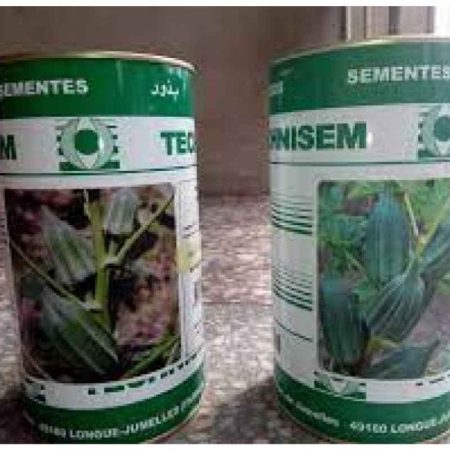
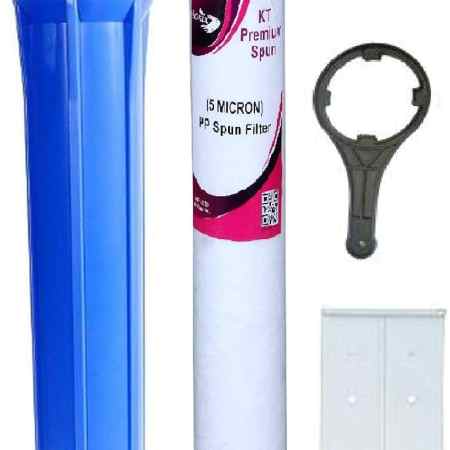
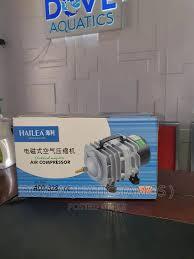
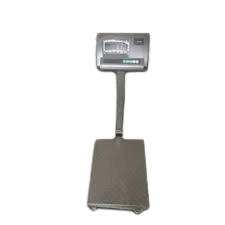

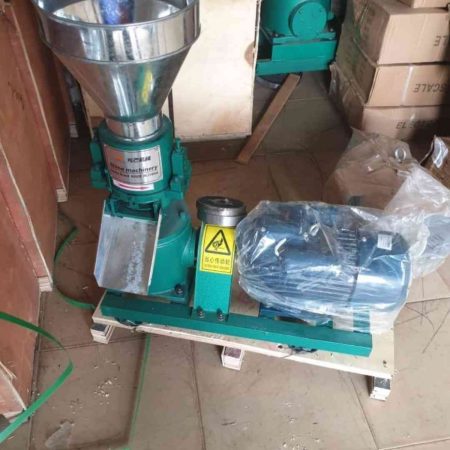
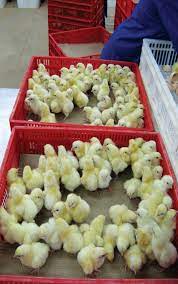
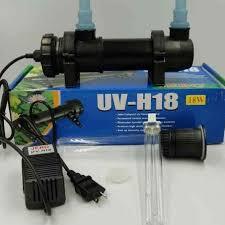
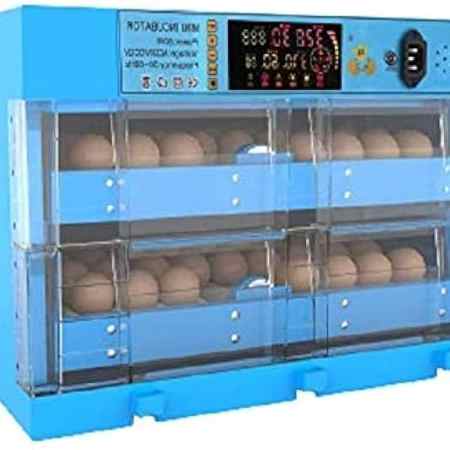

Add comment
You must be logged in to post a comment.